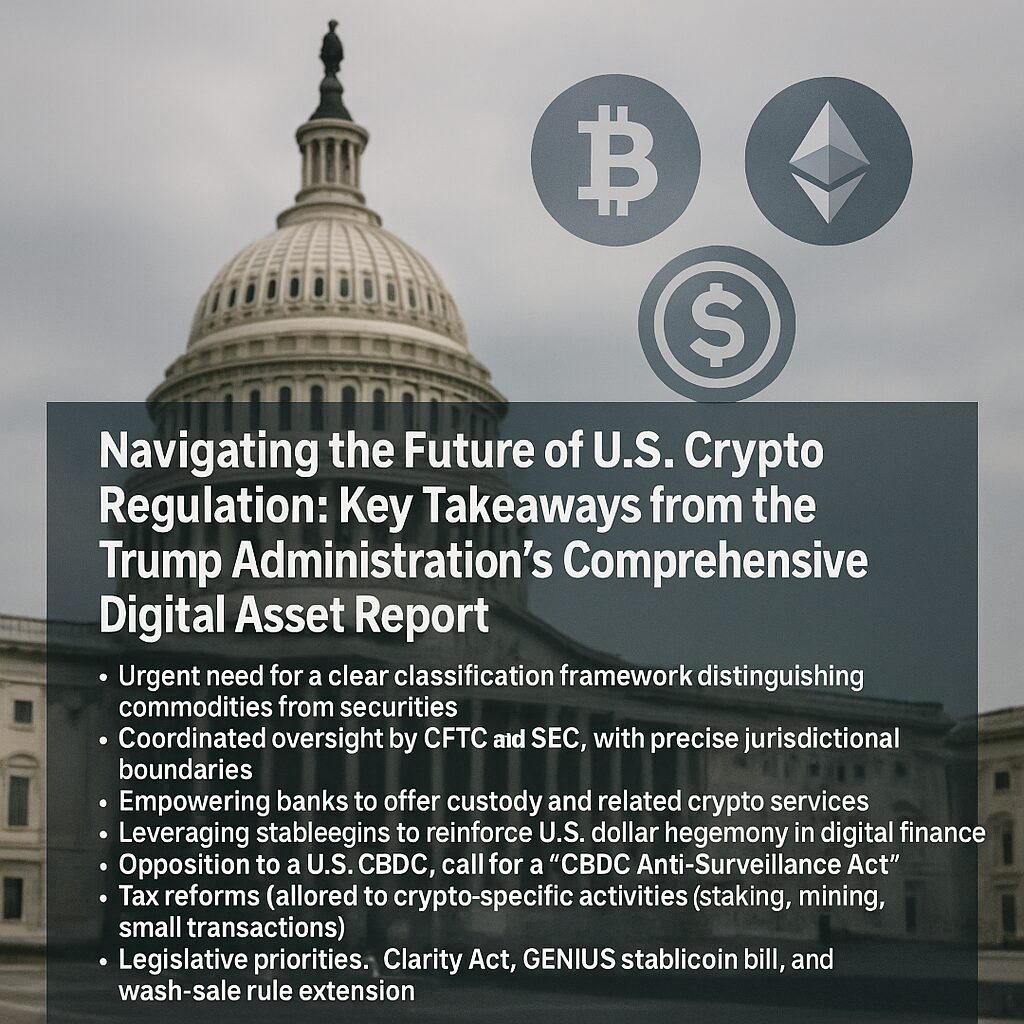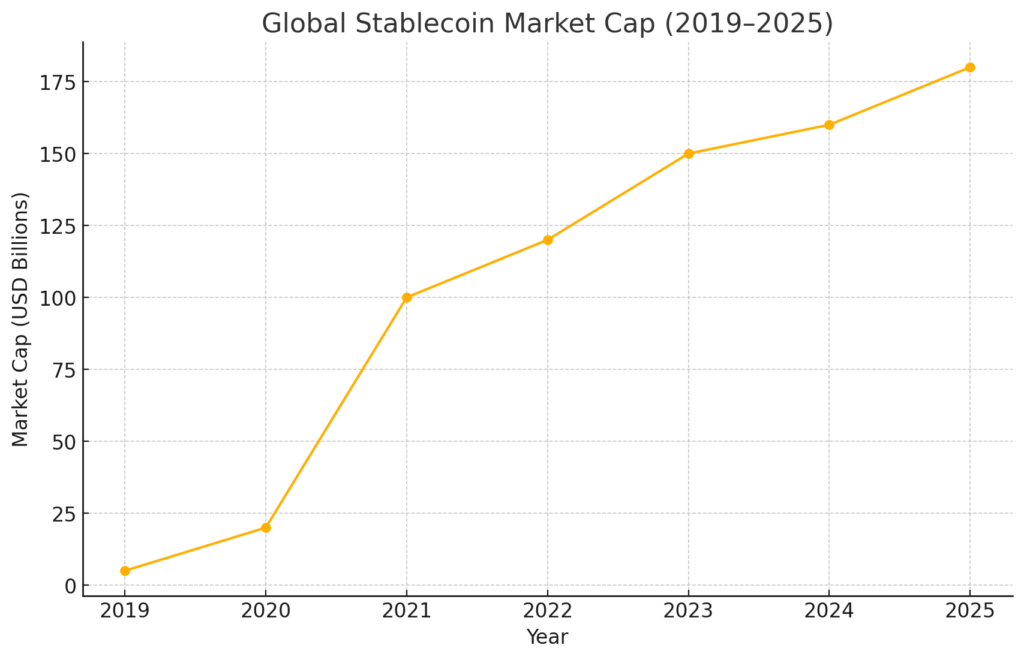
Main Points:
- Urgent need for a clear classification framework distinguishing commodities from securities
- Coordinated oversight by CFTC and SEC, with precise jurisdictional boundaries
- Empowering banks to offer custody and related crypto services
- Leveraging stablecoins to reinforce U.S. dollar hegemony in digital finance
- Opposition to a U.S. CBDC; call for a “CBDC Anti-Surveillance Act”
- Tax reforms tailored to crypto-specific activities (staking, mining, small transactions)
- Recommendations to modernize financial infrastructure for blockchain-based securities
- Legislative priorities: Clarity Act, GENIUS stablecoin bill, and wash-sale rule extension
1. Classification Framework: Defining Crypto Assets
The report’s foremost recommendation is the creation of a robust classification taxonomy that unambiguously delineates which digital assets qualify as securities versus commodities. This clarity is seen as foundational to regulatory consistency and market integrity. Under the proposed framework, tokens exhibiting passive investment characteristics would fall under SEC jurisdiction, whereas commodity-like tokens—such as Bitcoin—would be overseen by the CFTC.
A precise classification system is expected to:
- Reduce legal uncertainty for issuers and investors
- Streamline registration and disclosure processes
- Facilitate cross-border compliance and enforcement
Insert Figure 2 here: Regulatory Oversight Distribution

2. Jurisdictional Coordination: CFTC & SEC Roles
To avoid regulatory overlap, the report advises a cooperative memorandum of understanding between the SEC and CFTC. In practice:
- CFTC supervises spot trading of commodity tokens and derivatives markets
- SEC regulates tokens deemed investment contracts and securities offerings
This split mirrors longstanding jurisdictional norms in traditional finance but adapts them for digital assets. Stakeholders have praised this approach for balancing innovation and investor protection.
3. Banking Integration: Crypto Custody & Services
Enabling banks to provide crypto custody and related financial services is a central policy goal. The report recommends:
- Simplified charter processes for banks seeking crypto custody licenses
- Transparent, risk-based capital and liquidity requirements
- Guidance on audit, security, and anti-money laundering standards
Proponents argue that bank involvement will bolster market stability and bring uninsured digital assets under the safe harbor of deposit insurance structures.
4. Stablecoins & Dollar Dominance
The report underscores the strategic value of dollar-backed stablecoins in maintaining U.S. monetary hegemony. Key points include:
- Formal recognition of stablecoins as a payments rail
- Regulatory standards for reserve asset composition and transparency
- AML/CFT collaboration tools, including asset-freeze powers
By integrating stablecoins into mainstream payments, the U.S. could preempt foreign digital currency projects and reinforce the dollar’s global role.
Insert Figure 1 here: Global Stablecoin Market Cap (2019–2025)

5. CBDC Opposition: “Anti-Surveillance” Safeguard
Contrary to many peer nations, the report calls on Congress to enact a CBDC Anti-Surveillance Act, effectively banning a U.S. central bank digital currency (CBDC). The working group warns that a CBDC could:
- Enable excessive government monitoring of transactions
- Undermine financial privacy and civil liberties
Instead, policymakers are urged to leverage private-sector stablecoins under clear regulatory guardrails. 6. Tax Reform: Tailored to Crypto Mechanics
Recognizing that conventional tax rules ill-fit digital-asset dynamics, the report proposes:
- A specialized tax regime treating crypto as its own asset class
- Extension of wash-sale rules to digital tokens
- Clear guidance on staking rewards, mining income, and micro-transactions
Such reforms aim to reduce compliance burdens and close loopholes that erode tax revenue.
7. Infrastructure Modernization for Blockchain Securities
To fully realize a blockchain-based capital market, the report advocates updating legacy systems:
- Federal support for blockchain clearing and settlement platforms
- Regulatory “sandboxes” for pilot programs in tokenized securities
- Interoperability standards across trading venues
These measures could position U.S. exchanges as global hubs for digital-native securities.
Conclusion
The Trump administration’s 160-page report lays a comprehensive blueprint for U.S. digital asset policy, blending deregulatory impulses with targeted protections. By clarifying asset classification, delineating SEC/CFTC roles, integrating banks, championing stablecoins, opposing a CBDC, reforming taxes, and modernizing infrastructure, the report seeks to usher in a “Golden Age” of American crypto leadership. For investors scanning for next-generation assets and practitioners exploring blockchain use cases, these recommendations chart a clear regulatory path—one that, if enacted, could substantially bolster both innovation and market confidence.

